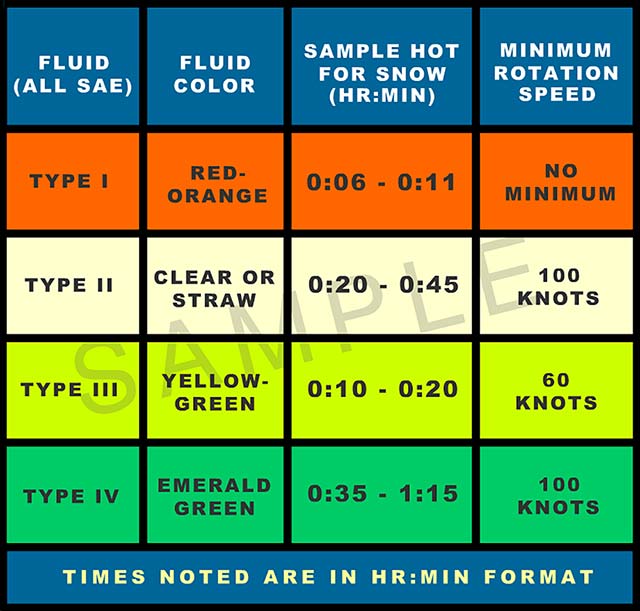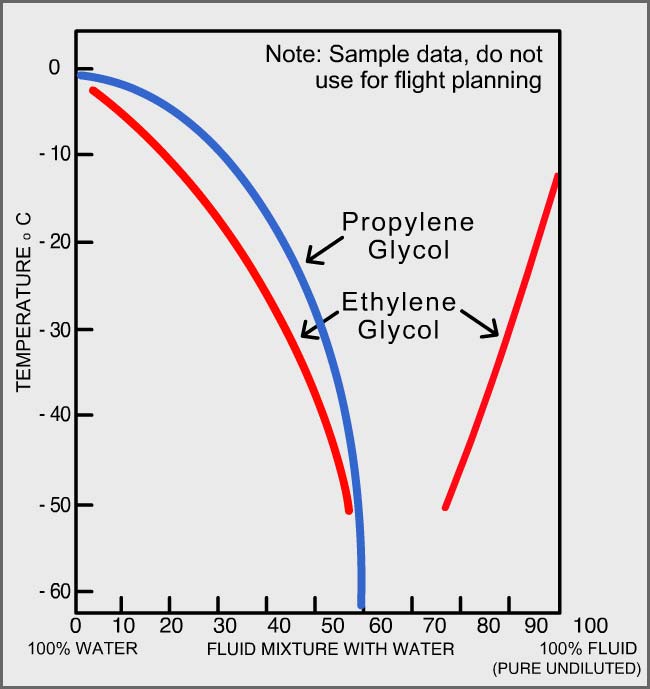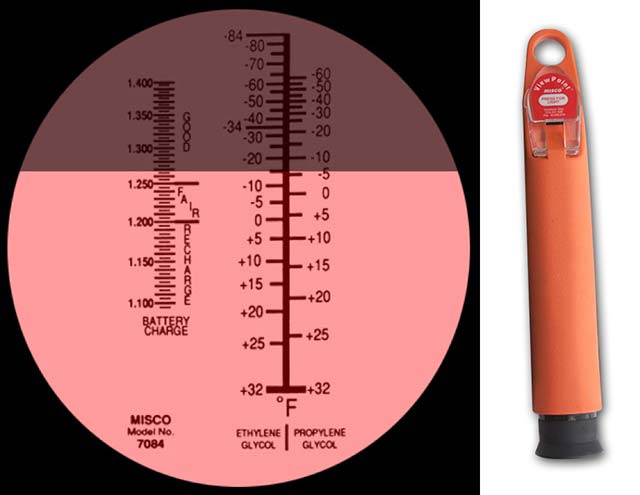A Pilot's Guide to Ground Icing
Module III - Fluid Basics
What you need to know
Section: Which Fluid is Right for Your Aircraft?
Start This SectionWhich Fluid is Right? Fluid Basics
There are four standard aircraft de-icing and anti-icing fluid types: Type I, II, III, and IV.
Type I fluids are the thinnest of fluids. As such, they can be used on any aircraft, as they shear/blow off even at low speeds. They also have the shortest hold-over times (HOT) or estimated times of protection in active frost or freezing precipitation.
Type II and IV fluids add thickening agents to increase viscosity. The thickeners allow fluid to remain on the aircraft longer to absorb and melt the frost or freezing precipitation. This translates to longer HOT, but it also means a higher speed is required to shear off the fluid.
Type III fluids are relatively new and have properties in between Type I and Type II/IV fluids. Type III fluids also contain thickening agents and offer longer HOTs than Type I, but are formulated to shear off at lower speeds. They are designed specifically for small commuter-type aircraft, but work as well for larger aircraft.
*Note: Holdover Times (HOT) are published in a range to account for variations in precipitation intensity: shorter time for heavier intensity, longer time for lighter intensity.

Fluid Characteristics Table* (enlargement)

Fluid type examples
Which Fluid is Right? Fluid Basics
How Fluids Work
Type I fluids are always applied heated and diluted. For de-icing, it is the heat and hydraulic force that accomplish the task. For anti-icing, it is primarily the heat imparted to the airframe that accomplishes the task. Caution: Type I fluids have the shortest HOT. When a Type I fluid fails, it fails suddenly.
Type II and IV fluids may be applied heated or cold, and diluted or full strength. In North America, typically Type IV fluids are applied cold, and only for anti-icing. In the UK, typically Type II or IV fluids are applied heated to accomplish de-icing as well as anti-icing.
Further Information
Type I fluids are essentially de-icing fluids, but can also be used for anti-icing. Because they are not thickened, they will shear or blow off the airplane at relatively low airspeeds (60 knots). However, their low viscosity results in the shortest set of holdover times.
Type II fluids provide better protection against refreezing than Type I fluids, but require a minimum 100 knot rotation speed. They are applied when long elapse time is anticipated between de-icing and take-off.
Type III fluids have a viscosity higher than Type I fluids but much lower than Type II or IV fluids. Type III fluids were formulated for use on small commuter-type aircraft with take off rotation speeds that are 60 knots or higher, but they can also be used on aircraft with higher rotation speeds. Type III fluids, unlike Type II or IV fluids, can be used in a hand held sprayer as they do not require specialized low shearing application equipment.
Type IV fluids meet the same fluid specifications as Type II fluids, and have a significantly longer HOT. Therefore, SAE Type IV fluids should be used on aircraft with rotation speeds (Vr) above 100 knots when long elapse time is anticipated between de-icing and take-off.

Fluid type chart
Regional Availability:
Type I fluids are available throughout the world.
Type II are common throughout Europe, but have limited availability in North America.
Type III became available in 2004 in Europe and North America.
Type IV are available throughout the world.
Which Fluid is Right? Fluid Basics
The fluid strength, or more specifically, the glycol/water ratio, determines the freezing point of the mix.
In the field, you can determine the glycol concentration, and therefore freezing point, with several products:
- A glycol tester, which is a specialized refractometer which measures freezing point directly
- A refractometer, which measures the index of refraction (how much light bends)
- A Brix refractometer, which measures index of refraction in degrees Brix
Many ground handling agents (FBOs) in North America have such testers. Refractometers are also available for purchase through aviation, microscope, or instrument supply stores, or directly from the fluid manufacturer.
Further Information
Freezing point as a function of fluid strength
This graph shows how the freezing point can change with fluid strength for several glycol solutions. Note that 100% propylene-glycol does not freeze even in extremely cold conditions. For ethylene (and di-ethylene) glycol, the greatest lowering of freezing point occurs near 70% solution, not 100%.

Phase diagram of aqueous glycol solutions
Determining the Glycol Concentrations
The glycol concentration can be determined in the field by measuring the refractive index of the fluid. The magnitude of refraction (how much light bends) is related to the concentration of glycol in the solution and hence the freezing point. Refractive index is expressed as a number without units such as 1.334 or in units of degrees Brix. Fluid manufacturers provide fluid specification charts that correlate the refractive index (also known as index of refraction), to the fluid freezing point.
Many ground handling agents (FBOs) in North America use a glycol tester to directly measure the freezing point of the fluid. A glycol tester is a specially adapted refractometer that converts refractive index directly into freezing point values. It has two freezing point scales, one for propylene glycol based fluids, and a second scale for ethylene glycol based fluids.
Both the standard refractometer and the Brix refractometers require a conversion chart to change their measurement units into glycol/water concentration and freezing point.


Ground handling agent checking the freezing point of a fluid using a refractometer (top) and refractometer with scale inset (bottom)

